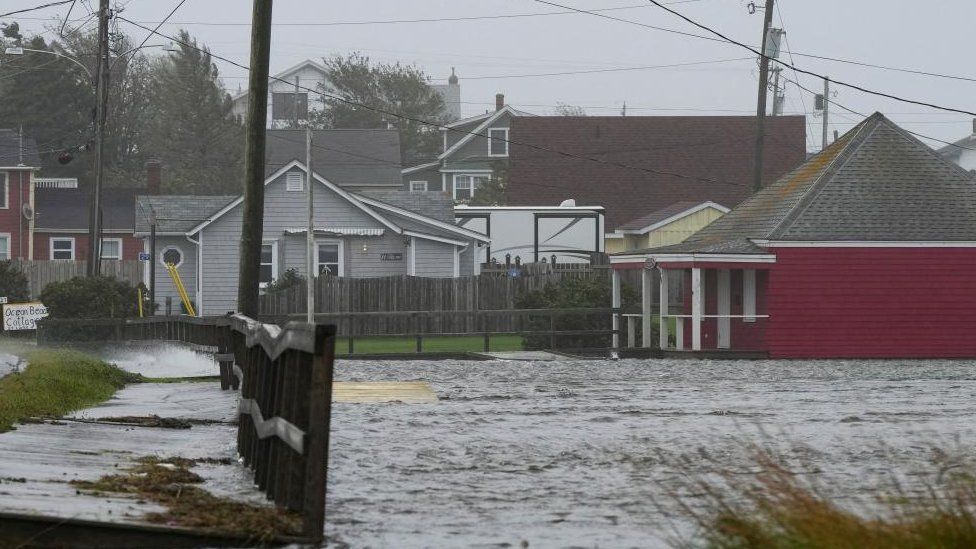One dead as Storm Lee hits New England and Canada
- Published

Storm Lee has left thousands without power in Nova Scotia as it made landfall in the far west of the Canadian province.
Now a post-tropical cyclone, it still brought near hurricane-strength winds of 70 mph (112 km/h), the National Hurricane Center (NHC) said.
Flights and ferry crossings have been cancelled and millions in New England and Canada are under storm warnings.
One man died in the US state of Maine after a tree fell on his vehicle.
The tree also brought down power lines on Highway 1 and utility workers had to cut the electricity before the 51-year-old could be removed from his car, Searsport Police Chief Brian Lunt said.
The storm is now moving north after making landfall on Long Island, a small island south-west of Halifax, on Saturday, according to the NHC.
It is expected to weaken steadily during the next couple of days.
Around 120,000 people were without power on Saturday in Nova Scotia as winds knocked down trees and power lines.
"Crews have been able to restore power to some customers," Matt Drover of the Nova Scotia electric utility said on Saturday.
"However, conditions are getting worse. In many cases, it isn't safe for our crews."
In Maine, more than 50,000 customers were believed to be without power on Saturday evening, according to utility website PowerOutages.us.
Lee has been hovering over the Atlantic for more than a week, starting off as a large hurricane which was downgraded as it moved slowly north.
The last hurricane to hit Maine was Hurricane Gerda in 1969. In 1991, Hurricane Bob was downgraded to a tropical storm just before making landfall.
Related Topics
- Published14 September 2023
- Published7 September 2023